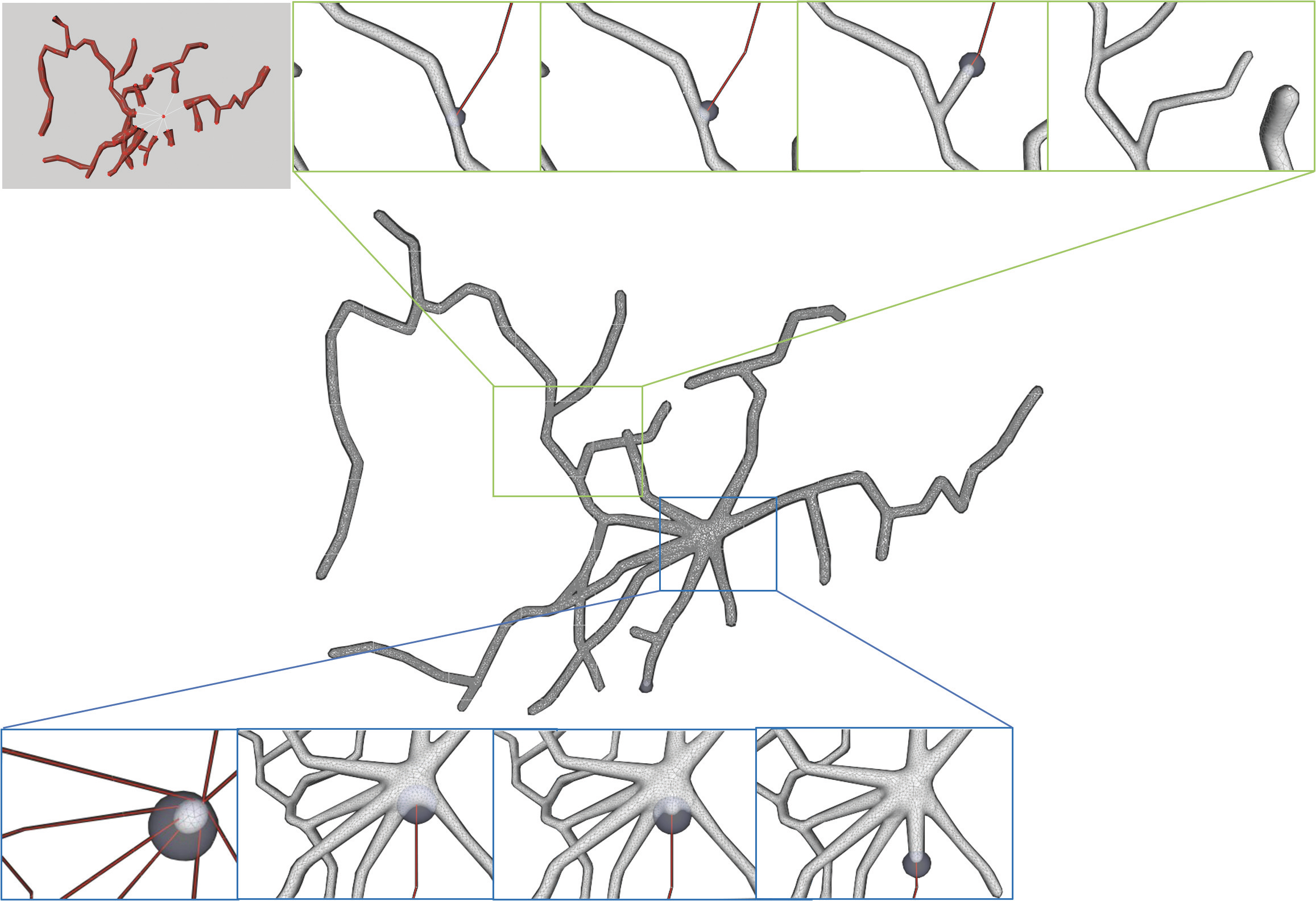Creating high-quality polygonal meshes which represent the membrane surface of neurons for both visualization and numerical simulation purposes is an important yet nontrivial task, due to their irregular and complicated structures. The anatomical features of neurons captured through morphological reconstruction can be used for detailed electrophysiological simulations of voltage dynamics throughout the 3D structure of the neuron. While the neuronal morphology reconstruction process usually produces a tree-like structure, such a point-and-diameter approximation becomes a problem when one wishes to use the morphologies for visualization or simulation.
To address the above problem, the work entitled “Robust quasi-uniform surface meshing of neuronal morphology using line skeleton-based progressive convolution approximation” was published online in Frontiers in Neuroinformatics on October 27, 2022, by Dr. Yimin Wang’s lab (Lab of Computing and Visualization for Connectomics Data) at the Guangdong Institute of Intelligent Science and Technology (GDIIST). The work proposed to generate the surface mesh model for a neuron based on progressive convolution approximation.

Generation of the neuronal surface mesh based on the line skeleton.
In detail, this paper developed a novel approach of constructing a watertight 3D mesh from the abstract point-and-diameter representation of the given neuronal morphology. The membrane shape of the neuron is reconstructed by progressively deforming an initial sphere with the guidance of the neuronal skeleton, which can be regarded as a digital sculpting process. To efficiently deform the surface, a local mapping is adopted to simulate the animation skinning. As a result, only the vertices within the region of influence (ROI) of the current skeletal position need to be updated. The ROI is determined based on the finite-support convolution kernel, which is convolved along the line skeleton of the neuron to generate a potential field that further smooths the overall surface at both unidirectional and bifurcating regions. Meanwhile, the mesh quality during the entire evolution is always guaranteed by a set of quasi-uniform rules, which split excessively long edges, collapse undersized ones, and adjust vertices within the tangent plane to produce regular triangles. Additionally, the local vertices density on the result mesh is decided by the radius and curvature of neurites to achieve adaptiveness.

The procedure of progressive mesh generation.
Extensive experiments were carried out to evaluate the effectiveness of the mesh generation approach. The results were also compared with major prior methods including CTNG, Neuroize, NeuroTessMesh, and AnaMorph. It is shown that the method developed in this paper poccesses higher effectiveness and robustness, and produces models with higher quality.
The work is in collaboration with Shanghai University and Bournemouth University. It was funded by the National Natural Science Foundation of China, the Guangdong High Level Innovation Research Institute, the Natural Science Foundation of Shanghai, and the Key-Area Research and Development Program of Guangdong Province.
Reference:https://doi.org/10.3389/fninf.2022.953930


